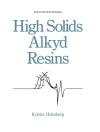INTRODUCTION TO PARTICLE TECHNOLOGY
A new edition of the indispensable guide to particulates and powders
Particle technology concerns the formation, processing and properties of the particles and powders which make up many of the products that surround us. Such products range from the cement and aggregate in the built environment to pharmaceuticals and processed foods. Most of the process industries involve particles, either as essential components such as catalysts or as intermediate or final products, and minerals such as the rare earths that are generally mined and processed in particulate form. Particles can have many beneficial uses but they can also cause harm in the environment and, through inhalation, to the individual. In all cases, the powder properties, particularly particle size, are crucially important.
This well-known textbook, now in its 3rd edition, provides an easily-understood introduction to the underlying scientific principles of particle technology, together with examples of how these principles can be used in practical design and operation of industrial processes. Each chapter contains both worked examples and exercises for the student. Based on feedback from students and users of the earlier editions, this revised and expanded text includes introductory chapters on particles as products and on computational methods. The topics have been selected to give coverage of the broad areas of particle technology and include:
* Characterization (size analysis, surface area)
* Processing (granulation, fluidization)
* Particle formation (granulation, crystallisation, tableting, size reduction)
* Storage and transport (hopper design, pneumatic conveying, standpipes)
* Separation (filtration, settling, cyclones)
* Safety (fire and explosion hazards, health hazards)
* Engineering the properties of particulate systems to achieve desired product performance
* Discrete element modelling of particulate systems
Introduction to Particle Technology, 3rd Edition is essential reading for students of chemical engineering. The text is also recommended reading for students of mechanical engineering, applied chemistry, pharmaceutics, physics, mineral processing, and metallurgy, and is an excellent source for practising engineers and scientists looking to establish a working knowledge of the subject.
Über den Autor
Martin Rhodes, Ph D, is Professor Emeritus in the Department of Chemical and Biological Engineering, Monash University, Australia and has published extensively on particle technology.
Jonathan Seville, Ph D, is Professor of Formulation Engineering at the School of Chemical Engineering, University of Birmingham, UK. Formerly editor of the journal Powder Technology, he has published several books on particle technology. He is past President of the Institution of Chemical Engineers and a Fellow of the Royal Academy of Engineering.












